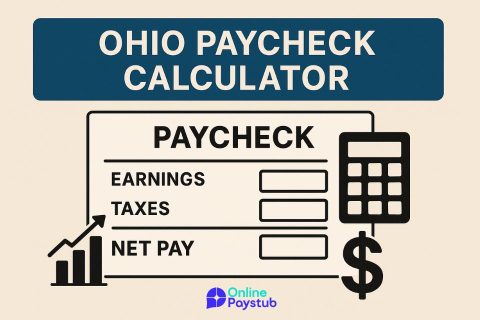Summary
Gross monthly income is the total income earned each month before deductions like taxes or insurance. It includes wages, bonuses, freelance earnings, rental income, and more. It’s crucial for budgeting, loan applications, and tax planning. For salaried workers, it’s annual salary divided by 12; for hourly workers, it’s based on average weekly earnings multiplied and adjusted to monthly. Household gross income combines all earners’ incomes and is used by lenders to assess affordability. Accurate calculation avoids financial missteps and supports informed decision-making.
Gross monthly income is the total amount of money a person earns in a month before any deductions are made. This includes wages, salaries, bonuses, commissions, and any other sources of income like rental payments or freelance work. For salaried employees, it’s typically the yearly salary divided by 12. For hourly workers, it’s calculated based on average hours worked multiplied by the hourly wage and then adjusted to a monthly figure.
Why Understanding Gross Monthly Income Is Important
Knowing your gross monthly income is essential for managing personal finances. It helps in setting budgets, applying for loans, determining eligibility for rental agreements, and planning savings. Lenders and financial institutions often use gross income as a baseline for credit decisions, making it a key figure when applying for mortgages, car loans, or credit cards.

Gross Monthly Income vs Net Monthly Income
Gross monthly income should not be confused with net monthly income. While gross income represents earnings before deductions, net income refers to what you actually take home after taxes, insurance premiums, retirement contributions, and other deductions. Understanding the difference between the two is important for budgeting and knowing your real spending power.
What to Include in Your Gross Monthly Income
Gross monthly income isn’t limited to just your base salary. It includes all sources of income before deductions, such as:
- Base salary or wages
- Overtime pay
- Bonuses and commissions
- Freelance or side income
- Rental income
- Alimony or child support (if applicable and counted by lenders)
- Investment income (interest, dividends)
When calculating your gross monthly income, it’s important to factor in all recurring income streams to get an accurate picture of your financial health.
How to Calculate Gross Monthly Income for Salaried Employees
If you’re a salaried employee, calculating gross monthly income is straightforward. Here’s how:
- Step 1: Identify your annual salary.
- Step 2: Divide that number by 12.
Example:
If your annual salary is $60,000:
$60,000 ÷ 12 = $5,000 gross monthly income
If you receive consistent bonuses or commissions, these should be added to your annual total before dividing by 12.
How to Calculate Gross Monthly Income for Hourly Employees
For hourly workers, the calculation involves a few more steps:
- Step 1: Multiply your hourly wage by the number of hours worked per week.
- Step 2: Multiply that weekly income by 52 (weeks per year).
- Step 3: Divide by 12 to get your gross monthly income.
Example:
If you earn $20/hour and work 40 hours/week:
$20 × 40 = $800/week
$800 × 52 = $41,600/year
$41,600 ÷ 12 = $3,466.67 gross monthly income
Make sure to include tips, overtime, or other recurring earnings in your calculation if they are a regular part of your income.
Examples of Gross Monthly Income Calculations
To clarify how gross monthly income is determined across different job types, here are a few examples:
- Salaried Employee:
Annual salary = $72,000
Gross monthly income = $72,000 ÷ 12 = $6,000 - Hourly Worker:
Hourly rate = $18
Hours/week = 35
Gross monthly income = ($18 × 35 × 52) ÷ 12 = $2,730 - Freelancer with Multiple Income Streams:
Project income = $3,000/month
Online sales = $500/month
Gross monthly income = $3,000 + $500 = $3,500
These calculations help with budgeting, loan applications, and understanding financial health.
What Is Household Gross Monthly Income?
Household gross monthly income is the total combined gross income from all earners in a household. This includes:
- Salaries or wages
- Side hustles or freelance work
- Rental or investment income
- Alimony or child support
- Any other regular income
Example:
Person A earns $4,000/month and Person B earns $2,500/month.
Household gross monthly income = $6,500
This figure is often used by lenders and landlords to assess affordability.
How Gross Monthly Income Affects Loan and Credit Applications
Lenders use gross monthly income to determine:
- Your debt-to-income (DTI) ratio
- How much you can borrow
- Whether you qualify for certain loan types
A higher gross income often improves your chances of approval and may get you better interest rates. Lenders typically prefer a DTI under 36%.
How Gross Monthly Income Is Used for Tax Purposes
Gross monthly income is the starting point for calculating:
- Federal and state income taxes
- Eligibility for tax deductions and credits
- Self-employment tax (if applicable)
It’s the base figure from which adjusted gross income (AGI) and taxable income are calculated after subtracting deductions.
What’s the Difference Between Gross Income and Adjusted Gross Income (AGI)?
- Gross Income: All income before any deductions.
- Adjusted Gross Income (AGI): Gross income minus specific IRS-allowed deductions (e.g., retirement contributions, student loan interest).
Example:
Gross income = $60,000
IRA deduction = $5,000
AGI = $60,000 – $5,000 = $55,000
AGI is used to determine tax liability and eligibility for credits.
Common Mistakes When Calculating Gross Monthly Income
- Confusing gross with net (take-home) pay
- Forgetting to include bonus or side income
- Using incorrect number of work weeks
- Not adjusting for irregular income (freelance, gig work)
- Overlooking pre-tax deductions (retirement, healthcare)
Accurate income reporting is essential for tax, loan, and budgeting purposes.




No comments to show.